WAEC BIOLOGY PRACTICAL ANSWERS 2020 CONFIRMED
Here on this page you will see the answers both on pictures or on a written form.
Do well to choose which is best for you… Zoom the pictures to have a clear glance, enjoy and good luck.
We will keep updating it with relevant answers. Stay tuned
: (1a)
(i)Specimen A– Clayey Soil.
(ii)Specimen B– A solution of one part of egg albumen mixed with two parts of water in a test tube/beaker.
(iii)Specimen C— Mushroom (freshly plucked).
[: 2dii)
(choose any 2)
i. Vitamin C
ii. Potassium
iii. Amino acid
iv. Magnesium
2dii)
(choose any 2)
i. Vitamin C
ii. Potassium
iii. Amino acid
iv. Magnesium
: (2a)
E: Succulent Fruit
F: Berry/Flesh Fruit
H: Legume/Pod
(2b)
E: Parietal Plancentation
F: Axile Plancentation
8: (1a)
(i)Specimen A– Clayey Soil.
(ii)Specimen B– A solution of one part of egg albumen mixed with two parts of water in a test tube/beaker.
(iii)Specimen C— Mushroom (freshly plucked).
1d(iii)
Yeast
Mushrooms
Moulds
Truffles
1e(i). Phylum Mollusca
(2a)
E: Succulent Fruit
F: Berry/Flesh Fruit
H: Legume/Pod
(2b)
E: Parietal Plancentation
F: Axile Plancentation
[
8: (2a)
E: Succulent Fruit
F: Berry/Flesh Fruit
H: Legume/Pod
(2b)
E: Parietal Plancentation
F: Axile Plancentation
(2c)
E: Human
F: Animal
H: Explosive Mechanism
2dii)
(choose any 2)
i. Vitamin C
ii. Potassium
iii. Amino acid
iv. Magnesium
2ei) green
(1ai)
TABULATE
– TEST: Specimen B + 2drops of iodine solution
– OBSERVATION: No precipitate is found (No reaction is
occurring)
INFERENCE: It indicates specimen B contains no starch
content
(1aii)
TABULATE
– TEST: Specimen B + 2ml of NaOH(aq) + 3 drops of
CuSO4 + shake
– OBSERVATION: The mixture will turn to purple or violet
colour
– INFERENCE: Protein is present
(1b)
(i) Test for starch
(ii) Test for protein (Biurets test)
(1c)
– Additional income is obtained through quality mushrooms
– They contain vitamins and proteins and Laos acts as
antioxidants supporting the immune system
(1di)
Fungi
(1dii)
– Eukaryotic organism
– Absence of chlorophyll
– Cell walls made of chitin instead of cellulose
(1diii)
– Molds
– Mildews
– Smuts
– Rusts
– Yeast
(1ei)
Mullosca
(1eii)
– Presence of tentacles
– Possession of soft and unsegmented bodies
– Body is covered by a mantle and she’ll
– They are bilaterally symmetrical
– They are triploblastic with three layers
(1fi)
– Specimen C (mushrooms) are decomposers breaking
down surface waste releasing nitrogen back into the soil in
form of ammonium nitrate, a nutrient essential for plant
survival
(1fii)
Saprophytic mode of nutrition
Use either loops, whorls or arches
(4diii)
Accidental, double loop, Tented arch fingerprints
(4div)
– It is highly accurate
– Very useful in criminal identification
– It is easy to use
– It is unique and can never be the same for two persons
(4dv)
Morphological variation
Okpe Christian:
(4dii)
Use either loops, whorls or arches
(4diii)
Accidental, double loop, Tented arch fingerprints
(4div)
– It is highly accurate
– Very useful in criminal identification
– It is easy to use
– It is unique and can never be the same for two persons
(4dv)
Morphological variation
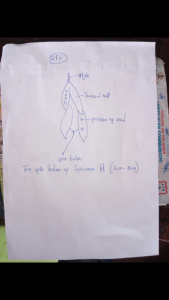
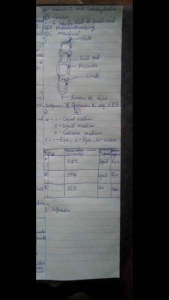
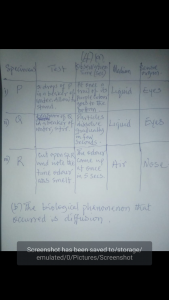
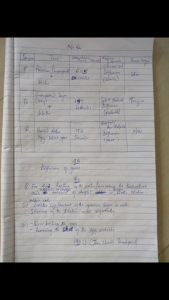
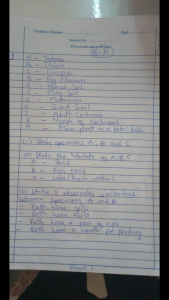
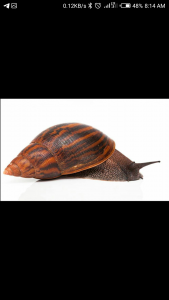
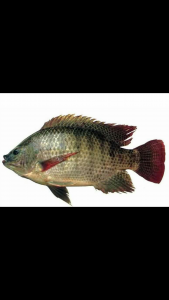
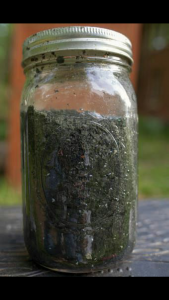
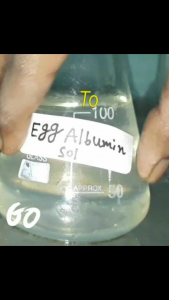
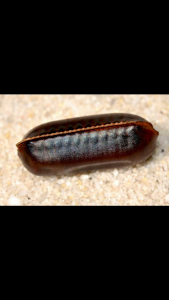

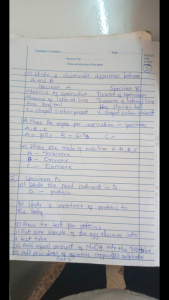
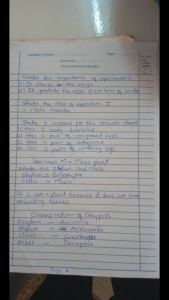
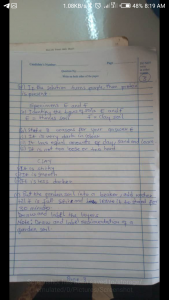
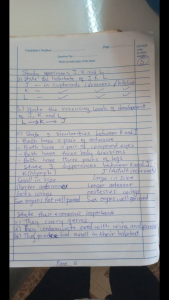
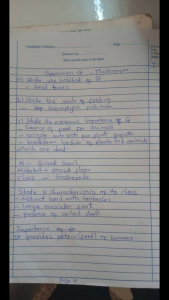
Similarities Between Specimen F (tomatoes) and Specimen G (fresh pod of cowpea)
Both have annual life cycle
Both have seeds present
They both have plantation present
Differences Between Specimen F (tomato) and Specimen G (fresh pod of cowpea)
Specimen f (tomato) Specimen G (fresh pod of cowpea)
Specimen F Is a fleshy fruit while Specimen G is a dry dehiscent fruit
Specimen F Has axial placentation while Specimen G has a marginal placentation
Specimen F Mode of dispersal is by an animal while Specimen G Mode of dispersal is by explosive mechanism
Specimen F have Absence of epigeal germination while Specimen G presence of epigeal germination
Similarities Between Specimen E (pawpaw) and Specimen H (pride of Barbados plant)
They both serves as a source of medicine
Differences Between Specimen E (pawpaw) and Specimen H (pride of Barbados plant)
Specimen E is a berry ( fleshy fruit) while Specimen H is a dry dehiscent fruit
[31/08 08:03] Aremu: Biology practical Diagram tricks for 2020
✓ Title
✓ Quality
• Neatness of Labels
• Magnification
• Size
• Clarity of Lines
✓ Details
• It depends on the specimen
✓ Labels
Wishing you all outstanding success in your WAEC 2020
GIANT LAND SNAIL
Phylum Mollusca
Class Gastropoda
Characteristics of mollusca
Observable features
Adaptive features
Economic importance both beneficial and harmful effects.
Habitat.
] Aremu: TRANSVERSE SECTION OF RIPE TOMATO FRUIT
Type of placentation — AXILE placentation. The carpels of a syncarpous ovary meet in the centre to form the placenta to which the ovules are attached.
Types of fruit
It is a true fruit
It is a simple fruit. Develop from a syncarpous ovary
It is a fleshy fruit
It is a berry. The seeds are scattered within the mesocarp and the endocarp.
Observable features of the specimen
Observable or structural differences between pawpaw and tomato.
Economic importance
Nutritional benefits of tomato.
Classification of the plant.
Agent of dispersal. Animal, human
MUSHROOM ( FRESHLY PLUCKED)
It is a fungus. It belongs to the Psalliota spp.
Habitat—- They may be found in woodlands, fields and farmlands
Structure—- The spore bearing organ — the sporophore — is the familiar structure called a mushroom. The thick fleshy stem- like portion of the sporophore is called the STIPE which bear an umbrella-shaped cap called the PILEUS. The ANNULUS is the ring- like structure around the upper end of the stipe. It marks the place where the cap joined the the stipe before the cap opened up. The lower side of the pileus contains numerous plate- like structures radiating from its centre. These are called gills. Place the lower end of the mushroom in a basin of water and swirl it gently to wash of the soil.
A network of hyphae – the mycelium which nature is hidden in the soil becomes visible. Use a handlens to examine the hyphae. Are they septate or non- septate.
Divide the stipe transversely just above the annulus. Shake the gills over a sheet of white paper or tissue paper, if the mushroom is fresh and ripe a mass of spores will collect on the paper. Examine the spores with a handlens, what colour are they??
TYPE OF NUTRITION— Saprophytic nutrition. They feed on dead and decaying organic materials. The association involving this type of nutrition is called SAPROPHYTISM.
The saprophytes secretes enzyme unto the substrate ( rotten wood) of dead and decaying organic materials on which they grow. The enzyme digest some portion of the substrate outside the body by a process called extra cellular digestion.
The digested food material on the substrate is then absorbed into the body through the hyphae or rhizoids ( Rhizopus). Other examples of saprophytes are rhizopus, mucor, toadstool and penicillium.
Economic importance of mushroom
Beneficial and harmful effects of fungi.
Characteristics of fungi
[
]: TRANSVERSE SECTION OF RIPE PAWPAW FRUIT
Type of placentation
Parietal placentation — The ovules are attached to the sides of a syncarpous ovary having a single chamber
Placentation is the arrangement of seeds in a fruit.
Agents of dispersal — Animal, human.
Features that aid the dispersal
Type of fruit
It is a true fruit i.e it develops solely from a fertilised ovary
It is a simple fruit i.e it develops from a flower with a single ovary. The ovary is syncarpous ( i.e the carpels are fused together) as in okro and tomato.
It is a flesy fruit( i.e the whole pericarp — epicarp, mesocarp, endocarp — or at least one of its layers is thick, soft and fleshy / succulent especially when ripe.
Type of fleshy fruit— BERRY. Other examples of berries are tomatoes, pepper etc. The peeicarp of a berry consists of three layers. Thin epicarp, succulent mesocarp and endocarp. It has only one chamber where the seeds are located.
Other types of fleshy fruit — DRUPE e.g coconut and mango
HESPERIDIUM — e.g orange, lemon.
Pawpaw flower is a DIOECIOUS flower i.e the male and female flower are found on different plants. The plant is said to be dioecious.
Economic importance of pawpaw
Nutritional benefits of pawpaw.
Structural differences between berry and drupe.
Crop classification — Agricultural classification and life cycle classification
[31/08 08:03] Aremu: Specimen E – Transverse Section of Ripe Paw Paw
Botanical name of Specimen E : Carica papaya
Classification of Specimen E
It is classified as a type of fleshy fruit
Structure of Specimen E
It consist of three layers which are
Epicarp
Mesocarp and
Endocarp
N:B – The type of fleshy fruit of specimen E is berry
Economics Important of Specimen E
It has a high nutritive and medicinal value
it is used in the production of cosmetic beauty product
They are good source of potassium
Mode of dispersal of specimen E
[31/08 08:03] Aremu: FRESH POD OF COWPEA PLANT.
Cut longitudinally
Types of placentation — Marginal placentation. Ovules are attached to the placenta along one margin of the ovary.
Types of fruit
It is a true fruit
It is a simple fruit. Develop from a monocarpous ovary. As in maize
It is a dry fruit i.e type of fruit in which the pericarp becomes dry , hard and woody or fibrous when the fruit ripens.
It is a dehiscent fruit i.e the fruit splits to release its seeds when ripe.
Types of dehiscent fruit. It is a Legume/ Pod.
LEGUME/POD
A legume or pod is a simple fruit formed from a superior monocarpous pistil. It is usually long and flattened side ways. When the fruit is ripe the pericarp dehisces/ break longitudinally along both sides to release the seeds inside it. The seeds are usually arranged along one of the margins of the fruit ( marginal placentation ). Examples of legumes pride of Barbados, flamboyant.
Nutritional benefits
Structural or observale features.
Crop classification.
Aremu: Specimen H – Complete green pod of Pride of Barbados Plant
The botanical name of Specimen H
It Is Caesalpinia Pulcherrima
Floral Part of Specimen H
I. Sepals/calyx
II . Petals / Corolla
III. Stamen/androecium
IV. Pistil / gynoecium
Structure of specimen H
Flower are conspicuous /large
Brightly coloured plants / greens
Stigma is sticky
Domestic uses of specimen H
it is used for beautification
For medical purpose
As a source f income
Economic Importance of Specimen H
Environmental; Ornamental
Medicines
Vertebrate poisons; mammals
The symmetry of Specimen H
Bilateral/Bilaterally Symmetrical (because it can be cut into equal halves along only one plane)
Sex of Specimen H
Hermaphrodite/bisexual ( because it has both pistil / male and female organs /androecium and gynoecium).
Specimen H Diagram: Complete green pod of Pride of Barbados Plant
[31/08 08:03] Aremu: Economic Importance of Specimen D
They eat very low on the food web
they provide food for all sorts of mammals, birds earthworm e.t.c
They cause great disaster to farmers crop
they consume rotten vegetation like most leaf.
Mode of the feeding of Specimen D
Is by Scraping and they mostly feed on leaves and insect
Sex of Specimen D
They exhibit Hermaphrodite / Bisexual (The snail with bigger shell are mainly female)
Specimen D Diagram: Gaint Land Snail
Specimen of Gaint Land Snail
Specimen of Gaint Land Snail
Similarities Between Specimen F (tomatoes) and Specimen G (fresh pod of cowpea)
Both have annual life cycle
Both have seeds present
They both have plantation present
Differences Between Specimen F (tomato) and Specimen G (fresh pod of cowpea)
Specimen f (tomato) Specimen G (fresh pod of cowpea)
Specimen F Is a fleshy fruit while Specimen G is a dry dehiscent fruit
Specimen F Has axial placentation while Specimen G has a marginal placentation
Specimen F Mode of dispersal is by an animal while Specimen G Mode of dispersal is by explosive mechanism
Specimen F have Absence of epigeal germination while Specimen G presence of epigeal germination
Similarities Between Specimen E (pawpaw) and Specimen H (pride of Barbados plant)
They both serves as a source of medicine
Differences Between Specimen E (pawpaw) and Specimen H (pride of Barbados plant)
Specimen E is a berry ( fleshy fruit) while Specimen H is a dry dehiscent fru
[31/08 08:03] Aremu: Source of Food of Specimen E
Vitamin A and C
Characteristics of Specimen E
They have pleasant aroma
The skin colour of Specimen E range from green to yellow.
Specimen E can be easy press with your thumb.
Specimen E Diagram: Transverse Section of Ripe Paw Paw
2020 Waec Biology practical specimen Answer
2020 Waec Biology practical specimen Answer
Specimen D – Giant land Snail
Habitat of Specimen D
Specimen D lives in shrublands, agricultural areas, plantations, garden, wetland e.t.c
Phylum – Mollusca
Class – Gastropoda
Observation Features that adapt Specimen D to its habitat
Lungs – Adapt to on land habitat through the use of lungs that take in oxygen.
Shells – for protection
Tentacles – for vision and feelings
Rasp tongue – for consumption and digestion
Foots – for movement inland habitat
Economic Importance of Specimen D
They eat very low on the food web
they provide food for all sorts of mammals, birds earthworm e.t.c
They cause great disaster to farmers crop
they consume rotten vegetation like most leaf.
Mode of the feeding of Specimen D
Is by Scraping and they mostly feed on leaves and insect
Sex of Specimen D
They exhibit Hermaphrodite / Bisexual (The snail with bigger shell are mainly female)
Specimen D Diagram: Gaint Land Snail
Specimen of Gaint Land Snail
Specimen of Gaint Land Snail
Similarities Between Specimen F (tomatoes) and Specimen G (fresh pod of cowpea)
Both have annual life cycle
Both have seeds present
They both have plantation present
Differences Between Specimen F (tomato) and Specimen G (fresh pod of cowpea)
Specimen f (tomato) Specimen G (fresh pod of cowpea)
Specimen F Is a fleshy fruit while Specimen G is a dry dehiscent fruit
Specimen F Has axial placentation while Specimen G has a marginal placentation
Specimen F Mode of dispersal is by an animal while Specimen G Mode of dispersal is by explosive mechanism
Specimen F have Absence of epigeal germination while Specimen G presence of epigeal germination
Similarities Between Specimen E (pawpaw) and Specimen H (pride of Barbados plant)
They both serves as a source of medicine
Differences Between Specimen E (pawpaw) and Specimen H (pride of Barbados plant)
Specimen E is a berry ( fleshy fruit) while Specimen H is a dry dehiscent fruit



Thanks
It’s really help me
Welcome
How can l join this group
Just click join
Pls give me yous whatsapp no so i can join ur group
pls is it free
Its free. Just join the group from the site header… Look at the site top page. You will see it